According to the India’s official position, Kashmir is an “integral part” of India. Pakistan’s official position is that Kashmir is a disputed territory whose final status must be determined by the people of Kashmir. Certain Kashmiri independence groups believe that Kashmir should be independent of both India and Pakistan.There are many questions that need to be answered when we talk about this sensitive issue.

We collected some information from BBC News and Wikipedia regading Kashmir conflit.These are arranged here in Q and A or step-by-step guide to the dispute
Why is Kashmir disputed?
The territory of Kashmir was hotly contested even before India and Pakistan won their independence from Britain in August 1947.
Under the partition plan provided by the Indian Independence Act of 1947, Kashmir was free to accede to India or Pakistan.
The Maharaja, Hari Singh, wanted to stay independent but eventually decided to accede to India, signing over key powers to the Indian government – in return for military aid and a promised referendum.
Since then, the territory has been the flashpoint for two of the three India-Pakistan wars: the first in 1947-8, the second in 1965.
In 1999, India fought a brief but bitter conflict with Pakistani-backed forces who had infiltrated Indian-controlled territory in the Kargil area.
In addition to the rival claims of Delhi and Islamabad to the territory, there has been a growing and often violent separatist movement against Indian rule in Kashmir since 1989.
What are the rival claims?
Islamabad says Kashmir should have become part of Pakistan in 1947, because Muslims are in the majority in the region.
Pakistan also argues that Kashmiris should be allowed to vote in a referendum on their future, following numerous UN resolutions on the issue.
Delhi, however, does not want international debate on the issue, arguing that the Simla
Agreement of 1972 provided for a resolution through bilateral talks.
India points to the Instrument of Accession signed in October 1947 by the Maharaja, Hari Singh.
Both India and Pakistan reject the option of Kashmir becoming an independent state.
How dangerous is the Kashmir dispute?
It is potentially one of the most dangerous disputes in the world and in the worst-case scenario could trigger a nuclear conflict.
In 1998 India and Pakistan both declared themselves to be nuclear powers with a string of nuclear tests.
In 2002 there was a huge deployment of troops on both sides of the border as India reacted to an armed attack on the national parliament in Delhi the previous December. Tension between the two countries has rarely been so high.
India said the attack was carried out by Pakistani-based militants assisted by the Pakistan government – a charge always denied by Pakistan.
For much of the last two decades, separatist militancy and cross-border firing between the Indian and Pakistani armies has left a death toll running into tens of thousands and a population traumatised by fighting and fear.
Are there grounds to hope the Kashmir dispute can be resolved?
Recent years have seen a big thaw in relations between India and Pakistan.
In addition to holding more talks, they have taken several Kashmir-specific confidence building measures. A bus service between the two parts of Kashmir was resumed in 2005.
In October 2008 an old trade road was reopened after 60 years across the Line of Control (LoC) that divides Indian and Pakistani-administered Kashmir. Earlier in the same month a rail service was introduced.
The two governments have huge international backing to continue the peace process and make their ongoing negotiations succeed.
An end to the violence and uncertainty in Kashmir would also be widely welcomed in India and Pakistan – and not only by those weary of the fighting or those who see it as a hindrance to the economic development of the South Asia region.
However, a diplomatic solution has escaped both sides for more than 60 years, and there are no signs of any new proposals yet.
Furthermore, both governments face powerful hard line groups within their own countries who will be carefully monitoring the talks to make sure concessions they deem to be unacceptable are not offered to the other side.
Who are the militants?
Since the insurgency began in 1989, the number of armed Muslim separatists grew from hundreds to thousands. However their numbers have dwindled over the past two years.
The most prominent militant group are the pro-Pakistani Hizbul Mujahideen. Islamabad denies providing them and others with logistical and material support.
The Jammu and Kashmir Liberation Front (JKLF) was the largest pro-independence militant group but it gave up the armed struggle in 1994 and has since been active on the political front. Its influence is thought to have waned.
Other former militant groups have joined the umbrella of the All-Party Hurriyat (Freedom) Conference (APHC), which campaigns peacefully for an end to India’s presence in Kashmir.
However the hard line faction of the APHC – as well as several armed militant groups – are demanding a tripartite dialogue among Indian, Pakistan and Kashmiri representatives – but India has so far not agreed to this.
The moderate faction of the APHC, led by Mirwaiz Umar Farooq, opened bilateral talks with the Indian government in 2004.
But they have complained that Delhi has not taken steps it promised to create a conducive atmosphere for dialogue – such as the release of prisoners and the withdrawal of the laws that give sweeping powers to the armed forces.
Talks between the two sides last took place in early 2006.
Is religion an issue?
Religion is an important aspect of the dispute. Partition in 1947 gave India’s Muslims a state of their own: Pakistan. So a common faith underpins Pakistan’s claims to Kashmir, where many areas are Muslim-dominated.
The population of the Indian-administered state of Jammu and Kashmir is over 60% Muslim, making it the only state within India where Muslims are in the majority.
What is the Line of Control?
A demarcation line was originally established in January 1949 as a ceasefire line, following the end of the first Kashmir war.
In July 1972, after a second conflict, the Line of Control (LoC) was re-established under the terms of the Simla Agreement, with minor variations on the earlier boundary.
The LoC passes through a mountainous region about 5,000 metres above sea level.
The conditions there are so extreme that the bitter cold claims more lives than the sporadic military skirmishes.
Hardline protesters in Kashmir
Pakistan has said some militant groups are ‘terrorists’
North of the LoC, the rival forces have been entrenched on the Siachen glacier (more than 6,000 metres above sea level) since 1984 – the highest battlefield on earth.
The LoC divides Kashmir on an almost two-to-one basis: Indian-administered Kashmir to the east and south (population about nine million), which falls into the Indian-controlled state of Jammu and Kashmir; and Pakistani-administered Kashmir to the north and west (population about three million), which is labelled by Pakistan as “Azad” (Free) Kashmir. China also controls a small portion of Kashmir.
What’s the UN involvement?
The UN has maintained a presence in the disputed area since 1949.
Currently, the LoC is monitored by the UN Military Observer Group in India and Pakistan (Unmogip).
So what of the future?
In Indian-administered Kashmir, many people are wary of confidence building measures (CBMs) which they fear may be used as a ploy to convert the LoC into a permanent border.
Indian Prime Minister Manmohan Singh has reiterated that Kashmir’s borders cannot be redrawn, but they can be made “irrelevant”.
The Pakistani and Indian armies are for the most part observing a ceasefire along the LoC .
In what seemed like a major break from its position over the Kashmir question in 2008, Pakistan’s new President, Asif Ali Zardari, denounced separatist violence as “terrorism”. However, his spokesperson later clarified that the remark was about non-Kashmiri militants fighting in Kashmir.
Even so there has overall been a huge decline in violence in Indian-administered Kashmir over the past three years.
The main exception to that has been the events of the summer of 2008, when the government of Indian-administered Kashmir decided to transfer to a Hindu religious trust 100 acres of land on a mountain route leading to an important shrine.
This sparked widespread protests among Muslims in the valley throughout June, in which many civilians were killed. The decision was then rescinded in early July, which in turn triggered large-scale protests in the Hindu-majority districts around the city of Jammu.
The incident provided a good example of how volatile this beautiful part of the world can be – and how the capacity for violence is never far away.
The following is a timeline of the Kashmir conflict.
- Spring, 1947: Protests against the Maharaja’s taxation policies turn into a rebellion against Dogra rule in the district of Poonch. The revolt spreads to Mirpur and Muzaffarabad districts.
- July 19, 1947: The Muslim Conference, the majority party in the legislative assembly at the time, unanimously passes a resolution in favor of the accession of the state to Pakistan. Shortly thereafter, the “War Council” of the National Conference also meets; eight out of thirteen members vote in favor of accession to Pakistan.
- August-October, 1947: Communal riots break out in the Jammu region of the state; an estimated 200,000 Muslims are killed and much of the remaining population flees to Pakistan to become part of the islamic state.
- August 15, 1947: Independence and partition of British India into India and Pakistan. Jammu and Kashmir does not decide which dominion to join.
- October 3, 1947: Pro-Pakistan chieftains from the districts of Poonch, Mirpur, and Muzaffarabad declare independence from Dogra rule, and announce the formation of a provisional “Azad” (free) Jammu and Kashmir government at Rawalpindi, Pakistan.
- October 17, 1947: Patiala state forces enter Jammu & Kashmir to aid the Maharaja in his campaign against the separatists.
- October 22, 1947: Pashtuns from Pakistan’s North West Frontier Province, backed by Pakistani army, occupied Kashmir in response to the Jammu massacres. Maharaja of Kashmir asks India for help.
- October 26, 1947: Hari Singh signs an Instrument of Accession whereby Jammu and Kashmir accedes to India
- 1947/1948: Indo-Pakistani War of 1947 commences. Indian troops enter Srinagar.
- 1965: Pakistan launches Operation Gibralter which leads to Indo-Pakistani War of 1965.
- December 6, 1971: Indo-Pakistani War of 1971; Secession of East Bangla
- 1972: Republic of India and Islamic Republic of Pakistan agree to respect the cease-fire as Line of Control.
- April 13, 1984: In Operation Meghdoot, the Indian Army captures the Siachen Glacier region of Kashmir, starting the Siachen conflict.
- May, 1987: As a result of an agreement between Rajiv Gandhi and Farooq Abdullah, elections for the Jammu and Kashmir State Assembly are blatantly fixed in favor of the National Conference, resulting in widespread unrest in the state.
- 1989: Armed militancy begins in Kashmir.
- January 20, 1990: At least 50 Kashmiri protesters are shot to death by Indian paramilitary forces on the Gawakadal bridge in Srinagar in an incident that later becomes known as the Gawakadal massacre.
- July 30, 1992 : Balawaristan National Front founded with the aim of seeking independence of Balawaristan in Pakistan-administered Kashmir from Pakistan.
- January 3, 1993: Indian paramilitary forces burn down the main market in the town of Sopore and open fire on bystanders, killing at least 55 in what becomes known as the Sopore massacre.
- October 20, 1994: 1994 Kidnappings of Western tourists in India 3 Britons and 1 American kidnapped from New Delhi by Kashmir separatists. All 4 rescued successfully 2 weeks later.
- July 4, 1995: 1995 Kidnapping of western tourists in Kashmir – six western tourists abducted from Pahalgam by militants demanding release of Pakistani cleric Maulana Masood Azhar. One later escapes, another is beheaded and four are still missing and presumed dead.
- March 21, 1997: 1997 Sangrampora massacre Militants massacre 7 Kashmiri Pandit Hindus
- January 25, 1998: 1998 Wandhama massacre – murder of 23 Hindu Kashmiri Pandits allegedly by Lashkar-e-Taiba
- April 17, 1998: 1998 Prankote massacre – Islamic militants kill 26 Hindu villagers in Kashmir.
- June 19, 1998: 1998 Chapnari massacre – massacre of 25 Hindu participants of marriage party in Doda district of Jammu & Kashmir by alleged Islamic militants.
- August 3, 1998: 1998 Chamba massacre – murder of 35 Hindus in Chamba by alleged Kashmir militants.
- May – July 1999: Kargil War fought between India and Pakistan.
- December 24, 1999: Militants demanding release of imprisoned Kashmir separatists Hijack Indian Airlines Flight 814.
- March 20, 2000: Chittisinghpura massacre – murder of 35 Sikhs, perpetrated by Lashkar-e-Taiba according to the Indian government.
- August 1, 2000: 2000 Amarnath pilgrimage massacre – killing of 30 Hindu pilgrims in Pahalgam.
- February, 2001: An Indian army convoy kills 4 protesters, including two women, as well as critically wounding 18 others – the protesters were protesting against the killing of Jaleel Ahmed Shah.
- February 10, 2001: 2001 Chalwalkote massacre 15 muslims murderd by Kashmiri separatists.
- July 14-16, 2001: General Pervez Musharraf and Atal Behari Vajpayee meet for peace talks.
- August 3, 2001: 2001 Kishtwar massacre 17 Hindu villagers murdered by Islamic militants.
- October 1, 2001: Jammu and Kashmir state assembly in Srinagar attacked by militants allegedly belonging to Jaish-e-Mohammed- 29 killed 40 hurt.
- February, 2002: Indian-administered Kashmir was disrupted by a general strike in protest against reports of the killings of innocent civilians by the Indian security forces. The CM of Indian Kashmir, Farooq Abdullah, supported those protesting.
- July 13, 2002: 2002 Qasim Nagar massacre 29 Hindu labourers shot dead near Jammu
- March 25, 2003: 2003 Nadimarg Massacre – 24 Hindu villagers killed by Islamic militants in village of Nadimarg in Kashmir
- May 2, 2003: India and Pakistan restore diplomatic ties.
- July 11, 2003: Delhi-Lahore bus service resumes
- September 24, 2004: Prime Minister Manmohan Singh and President Musharraf meet in New York during UN General Assembly.
- April 30, 2006: 2006 Doda massacre terrorists murder 34 Hindus in Indian administered Kashmir.
- June 12, 2006: 2006 Kulgam massacre 10 killed by Kashmir militants.
- July, 2006 : Second round of Indo-Pakistani peace talks.
- July 11, 2006: 11 July 2006 Srinagar bombings – 8 tourists dead and 37 injured by militants in 5 grenade attacks.
- February 2007: Protests erupt in the Kashmir Valley as police exhumed the bodies who were alleged to have been killed in “fake encounters”.
- September 2007: Police use tear gas crowds of students protesting at the killing of Mohammad Ramzan who they was killed in a staged gun battle.
- June-August, 2008: Widespread protests in Kashmir due to Amarnath land transfer controversy
- November 17, 2008: State elections held peacefully in Kashmir with unusually high turnout inspite of boycott call by mujahideen.
- December, 2008: Violence in Kashmir falls to an all time low.
- January 5, 2009: Omar Abdullah of Jammu & Kashmir National Conference sworn in as the eleventh and the youngest chief minister of Jammu and Kashmir.
Sources : BBC News and WikiPedia
Related Posts
Hi there! I’m Sethu, your go-to guy for all things tech, travel, internet, movies, and business tips. I love sharing insights and stories that make life more interesting. Let’s explore the world together, one article at a time!
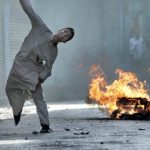

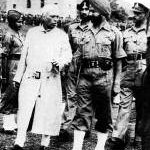
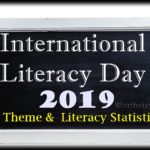
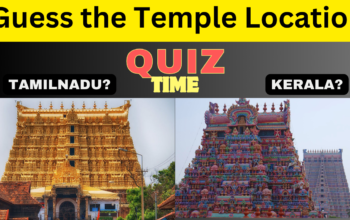
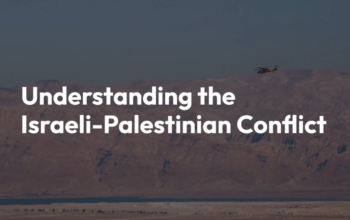
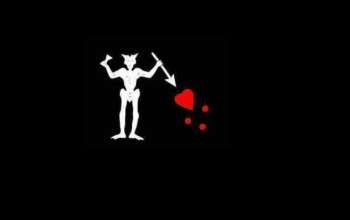




One thought on “Causes of Kashmir Conflict”
Comments are closed.